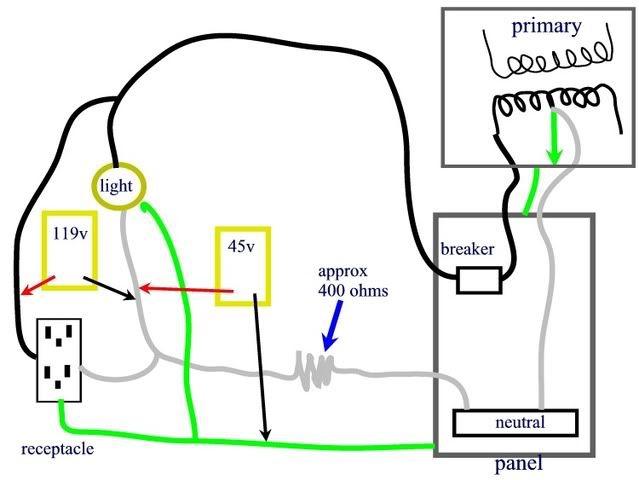electricalperson
Senior Member
- Location
- massachusetts
today i was doing a fire alarm system at a local hotel. the lady at the bar area called me over and asked me to look at her lights and plugs that didnt work. i took out my shiny new T+pro tester and stuck it in the receptacle and heres what i got.
L to N 119 volts
L to G 136 volts
N to G 45 volts
i called the "engineering" department and explained to them that they have a floating neutral and it should be fixed. (theres also receptacles in other parts of the buildings that dont work, not sure if its related or not and also a bunch of transformers for 120/208v 3 phase power to feed panels) but anyway they wouldnt let me fix the problem for some reason, but anyway was i correct with the term floating neutral? heres my guess on whats causing that (i didnt get to troubleshoot so its just a guess) XO on the transformer feeding the panel might not be grounded. anything wrong with that guess?
also the engineering department are not really engineers i think. they just fix stuff thats broken
L to N 119 volts
L to G 136 volts
N to G 45 volts
i called the "engineering" department and explained to them that they have a floating neutral and it should be fixed. (theres also receptacles in other parts of the buildings that dont work, not sure if its related or not and also a bunch of transformers for 120/208v 3 phase power to feed panels) but anyway they wouldnt let me fix the problem for some reason, but anyway was i correct with the term floating neutral? heres my guess on whats causing that (i didnt get to troubleshoot so its just a guess) XO on the transformer feeding the panel might not be grounded. anything wrong with that guess?
also the engineering department are not really engineers i think. they just fix stuff thats broken


